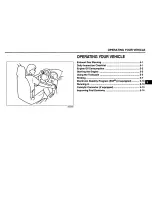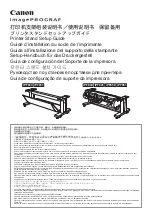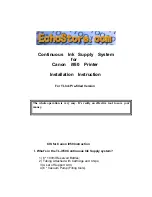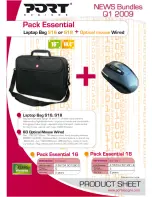
Structural Maintenance
12-3
UNIT INSPECTION
Inspect the unit during unit pre-trip and scheduled maintenance inspections. Look for loose or broken wires or hardware,
compressor oil leaks, or other physical damage that might affect unit performance and require repair or replacement of parts.
DEFROST DRAINS
Clean the defrost drains during scheduled maintenance inspections to be sure the lines remain open.
CONDENSER, EVAPORATOR AND RADIATOR COILS
Clean the coils during scheduled maintenance inspections. Remove any debris like leaves or plastic wrap that reduces airflow.
Clean dirty coils with compressed air or a pressure washer. If possible, blow air or water through the coil in the direction opposite
normal airflow. Be careful not to bend coil fins when cleaning a coil. Straighten any bent fins.
CAUTION: Air or water pressure should not be high enough to damage coil fins. See below for further cleaning instructions.
Micro-Channel Coil Cleaning Recommendations
NOTE: Only on some SLX units, and all SLXe and SLXi units
NOTE:If you do not follow these instructions exactly, you WILL VOID WARRANTY.
Notes:
1. Ensure condenser and evaporator coils are clean and free of debris.
2. Washing with clean water should be sufficient.
• Take a cloth or towel and wipe the air side of the coil going with the fins, across the tubes. (Results shown in picture below)
The coil will clean in a manner similar to the way lint cleans from the lint trap of a household clothes dryer.
• Use a soft bristled brush (DO NOT USE A WIRE BRUSH) and brush the coil going with the fins, across the tubes.
• A vacuum with a soft attachment can be used to suck the debris off the face as well as in the fins and tubes from the air side
of the coil.
3. The use of cleaning agents or detergents is strongly discouraged due to the possibility of degradation of the construction. If
using a power washer, the nozzle pressure should not exceed 600 psi (41 bar). For the best results, spray the coil perpendicular
to the face of the coil. The spray nozzle should be kept between 1 inch and 3 inches (25 to 75 millimetres) from the coil
surface.
4. If necessary to use a chemical cleaner or detergent use a cleaner that does not contain any hydrofluoric acids and is between
7 and 8 on the pH scale. Ensure dilution instructions provided by the detergent supplier are followed. In case of doubt about
the compatibility of the detergent with the type of materials listed above, always ask the supplier a written confirmation of
the compatibility. Should a chemical cleaner be required, it is MANDATORY that all components are thoroughly rinsed with
water even if the instructions of the cleaner specify that it is a “no rinse” cleaner. Failure to comply with above mentioned
guidelines will lead to a shortened life of the equipment to an indeterminable degree.
5. The repeated transportation of meat and fish waste can cause extensive corrosion to the evaporator coils and evaporator
section tubing over time due to ammonia formation and can reduce the lifespan of the coils. Appropriate additional measures
should be taken to protect the coils against the aggressive corrosion that can result from transportation of such products.
• The coils should be cleaned a Minimum of once a year.
• It is recommended that any time the unit is in for service or maintenance that the coils be inspected and cleaned if needed.
• The coil should be cleaned if there are visible accumulations that obstruct the view of the fins or tubes of the coil.
• The coils should be cleaned if there is debris embedded in the tubes and fins
The area and conditions in which the unit operates will dictate the cleaning intervals and method(s) needed
NOTE:If you do not follow the instructions above exactly, you WILL VOID WARRANTY and it’s NOT RECOMMENDED.
In some instances in may take a combination of two methods to result in a clean coil. Such as, first wiping the coil to clean the
surface and then using a vacuum, water or compressed air to clean down in the fins. This will depend on the type of debris that
needs to be cleaned from the coil.
Be sure not to contact the coil with any hard vacuum nozzle, air nozzle, or any other tool. This will damage the tubes of the coil.
Содержание SLXi Spectrum
Страница 17: ...Safety Precautions 2 5 Warning Decals...
Страница 18: ...Safety Precautions 2 6 Warning Decals Information Decals...
Страница 74: ...Unit Description 5 30...
Страница 128: ...Controller Operation 7 28...
Страница 156: ...Electrical Maintenance 8 28...
Страница 177: ...Engine Maintenance 9 21 Integral Fuel Solenoid Components 1 Integral Fuel Solenoid 2 O ring 3 Fuel Injection Pump Groove...
Страница 234: ...Refrigeration Maintenance 10 22...
Страница 309: ...13 Mechanical Diagnosis TK 482 TK 486 and TK 486V Engines 13 2...
Страница 316: ...Mechanical Diagnosis 13 8...
Страница 322: ...Refrigeration System Diagnosis 14 6...
Страница 332: ...Single Temperature Refrigeration System Diagrams 15 10...
Страница 339: ...Multi Temperature Refrigeration System Diagrams 16 7...
Страница 340: ...Multi Temperature Refrigeration System Diagrams 16 8...
Страница 342: ...Wiring Diagrams and Wiring Schematics 17 2...
















































